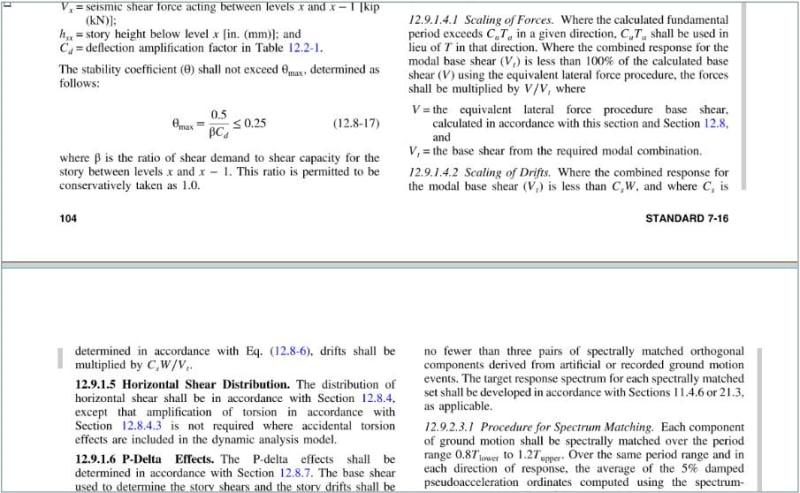RobertHale
Structural
I am trying to figure out what the ASCE 7-16 code intends for MRSA drift calculations.
Looking at section 12.9.1.4.2 of the code you have the following:

Furthermore, Looking at Equation 12.8-6, you have:

Based on those two provisions, is the intention NOT to scale the base shear for drift if you have a structure on a site where S1<0.6g or where Equation 12.8-6 doesn't control? Or is the intention to artificially perform a base shear calculation with the equation referenced (i.e. V' = [0.5*S1*Ie/R ]*W), then compare that with the modal base shear and scale if appropriate?
Thanks for any insight in advance.
Robert Hale, PE
Looking at section 12.9.1.4.2 of the code you have the following:

Furthermore, Looking at Equation 12.8-6, you have:

Based on those two provisions, is the intention NOT to scale the base shear for drift if you have a structure on a site where S1<0.6g or where Equation 12.8-6 doesn't control? Or is the intention to artificially perform a base shear calculation with the equation referenced (i.e. V' = [0.5*S1*Ie/R ]*W), then compare that with the modal base shear and scale if appropriate?
Thanks for any insight in advance.
Robert Hale, PE
